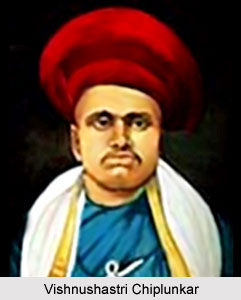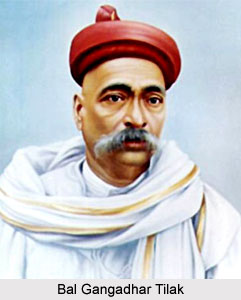 Marathi literature is said to have begun in the thirteenth century with the writing of Sri Krishna Charitra by the poet Bhaskar. The modern period begins with the advent of the English and introduction of the Western system of education. In the pre mutiny period there was an initial development of the Marathi language on account of the liberal policy of Elphinstone who believed in the encouragement of Vernacular literature together with the English language.
Marathi literature is said to have begun in the thirteenth century with the writing of Sri Krishna Charitra by the poet Bhaskar. The modern period begins with the advent of the English and introduction of the Western system of education. In the pre mutiny period there was an initial development of the Marathi language on account of the liberal policy of Elphinstone who believed in the encouragement of Vernacular literature together with the English language.
Modern Marathi Poetry
During this early period there were number of notable writers in Mumbai and Pune. Sri Janbhekar established `Sahitya Mandal` in Bombay and various monthlies were floated. Other writers were Kashinath, Sadashiva, Rao Sahib Mandalik and Dadoba Pandurang. In Poona new literature was written by Sri Krishna Shastri Chiplunkar and Lokhitwadi. Dictionaries and grammars were also prepared. In the next period from 1876 A.D. to 1943 A.D. there was a great creative development of Marathi literature. Two schools of thought arose, one classical and revivalist, another modern and assimilative. The former school in poetry was represented by Vishnushastri Chiplunkar with his writings in the monthly journal like `Nibandhmala,` Parashram Tatya and many others. The modernist school was represented by Keshava Sut later followed by Ram Chandra Pradhan and Vishnu Moreshwar among others.
 Bal Gangadhar Tilak and Veer Savarkar were the representatives of the classical school of poetry. Tilak described nature very well while Savarkar specialised in patriotic poems. His poems like Maharashtra Lakshmi and Hatbhagini vividly bring out his patriotic fervour. Chandra Shekhar was the greatest Marathi poet who wrote in the classical style of Jagannath and Jaydev. Other poets of this school were Parkhi, Chintamani, Majumdar and Madhavanuj.
Bal Gangadhar Tilak and Veer Savarkar were the representatives of the classical school of poetry. Tilak described nature very well while Savarkar specialised in patriotic poems. His poems like Maharashtra Lakshmi and Hatbhagini vividly bring out his patriotic fervour. Chandra Shekhar was the greatest Marathi poet who wrote in the classical style of Jagannath and Jaydev. Other poets of this school were Parkhi, Chintamani, Majumdar and Madhavanuj.
Keshvasuta was the modernist among the poets. He was looked upon as the father of modern Marathi poetry. He had his followers in Ram Ganesh Gadkari, Rendalkar, Nagesh, Keshavakumar and Sonalkar. Lyricism was the key-note of these poets. His poetry is a synthesis of music, word-painting and romanticism. Love was the constant theme. Narain Murlidhar Gupta wrote didactic and philosophical poems. Madhava wrote on historical topics and his poetry is very inspiring. After the first Great War new poets like Keshava Mahadeva, Tiwari Trambuk Bapuji, Thonbare, Anarid Rao Tekane, Madhava Trambak Patwardhan and others came to limelight. The modern Marathi poetry deals mainly with love, description of nature and female beauty.
Modern Marathi Drama
Drama has also made a noteworthy progress. Sri B. P Kirolskar was the father oœ the modern Marathi drama. His famous dramas are Vikrama Charitra, Shakuntala, Soubhadra and Ram Rajya Viyoga. Deval was the next representative dramatist. He was followed by Kolhatkar and Khadilkar. He wrote operas, prose-dramas and adapted English dramas to the Marathi stage. His famous dramas are death of Madhava Rao, Kichakvadha, Premdhwaj. Among the next best writers we have N. C. Kelkar, Khare, Vaman Rao Joshi and Atre. More than 1200 dramas have so far been written in Marathi Language.
Modern Marathi Prose
The first stories were translations from Sanskrit and European literatures. The father of the modem story was H. B. Apte. He was followed by Sahkari Krishna. The monthly `Manoranjan` which published stories of the budding writers started during this time. Among the famous story writers there are Gurjar, Gokhale, N. H. Apte, Deshpande and Saraswati Kumar. Kolhatkar resembles the Russian writers in his realism. There were women-writers like Girja Bai Kelkar, Kashitai and Anandi Bai.
Among the novelists the first great name is that of Han Narayan Apte who started writing his novels in the last two decades of the 19th century. H. N. Apte was the Walter Scott of Marathi literature. His first novel `Aj Kal Chya Goshti` was a realistic picture of the contemporary scene. Later on came the political novels like Bhavanand. His most important historical novels are Ushakal, Suryodaya, Suryagrahana, Gad Ala Pan Singh Geb, Rup Nagar Chi Kanya and Madhyanha.
Professor Vaman Malhar Joshi with his first novel `Ragini` satisfied the new taste of the public. His works show a psychological insight and portray the contemporary political and social problems. Among the recent novelists the most famous are Phadke, Ketkar, Khandekar, Madkholkar and P. Y. Deshpande and many more. The recent trend is towards socialism and psycho-analysis.
Marathi literature has made considerable progress in humorous writings. Among the famous humorous writers there are Kolhatkar, Atre, Gadkiri and Prof. Chintamani Vinayak Joshi. Juvenile literature has greatly developed in Marathi.
There has been an all-round development in Marathi literature. It has been affected by the literary trends in the West and in Bengal and like other Indian literatures its most recent phase is that of morbidity, realism and frustration.













